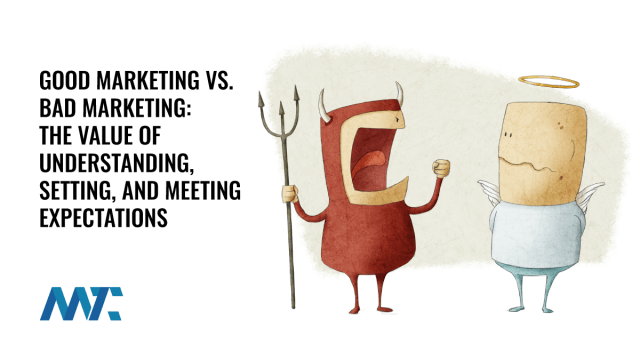Marketing is a powerful tool that can make or break a business. But what separates good marketing from bad marketing? The answer lies in understanding the value that your product or service brings to your clients, setting and meeting expectations, and prioritizing communication.
At the heart of all good marketing is communication and honesty. Good marketing sets realistic expectations and consistently meets or exceeds them. This fosters trust and credibility, leading to long-term customer relationships.
This means being transparent about what your product or service can and cannot do, setting realistic expectations, and proactively addressing any issues or concerns. Honesty builds trust, and trust builds loyalty. Overpromising and underdelivering, on the other hand, is a recipe for disappointment and customer churn.
Meeting The Value Proposition
The core of effective marketing is understanding and meeting your product or service’s unique value proposition (UVP). It’s about identifying your client’s specific needs and demonstrating how your offering better fulfills those needs than the competition. This involves not just highlighting features but showcasing the tangible benefits and positive outcomes clients can expect.
Sometimes, a product or service’s full potential isn’t immediately apparent. It may take time, experimentation, and innovation to uncover hidden features or develop new applications. A talented team can turn a good product into a great one by constantly pushing the boundaries and finding new ways to create value for clients.
As a CMO, I often tell our team that my job is to create a realistic vision of a solution for specific issues our prospects need assistance with. Our messaging isn’t to detail every feature and deliverable… it’s to to generate curiosity to drive someone into our lead funnel. At that point, I hand off the marketing qualified lead (MQL) to my sales team. Then, they get into the deliverables and ensure that they’re a sales-qualified lead (SQL) to continue.
Takeaways for Powerful Marketing
Understand Your Value Proposition: Clearly articulate the unique benefits your product or service offers.
Understand Your Client’s Challenges: Understand how your client will measure the success of your solution and how they value your engagement.
Set Realistic Expectations: Don’t overpromise; focus on consistently meeting or exceeding expectations.
Prioritize Honesty and Transparency: Build trust through open and honest communication.
Foster Innovation: Empower your team to explore new possibilities and create even more value for clients.
Focus on Long-Term Relationships: Nurture customer loyalty through exceptional service and ongoing engagement.
Marketing isn’t simply good or bad, though; it’s a spectrum. Even the most successful companies can have marketing missteps, and even struggling businesses can have moments of brilliance. Having worked with many SaaS platforms, our marketing did often set a vision that exceeded the product requirements. However, we always accommodated some innovation within the scope of our client SOWs. The key was meeting those expectations.
A company can thrive even if its product or service isn’t fully developed, as long as it has the resources and commitment to innovate and improve. Marketing can play a crucial role in this process by generating leads, building brand awareness, and fostering customer relationships, giving the company time and space to grow and evolve.
Good marketing isn’t just about flashy campaigns or clever slogans; it’s about understanding your clients, setting realistic expectations, and consistently delivering value. By focusing on honesty, transparency, and innovation, you can build a loyal customer base and achieve long-term success.
©2024 DK New Media, LLC, All rights reserved. | Disclosure
Originally Published on Martech Zone: Good Marketing vs. Bad Marketing: The Value of Understanding, Setting, and Meeting Expectations

